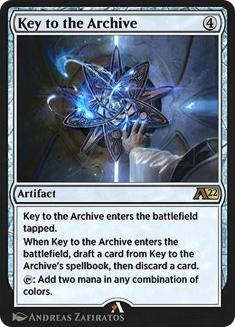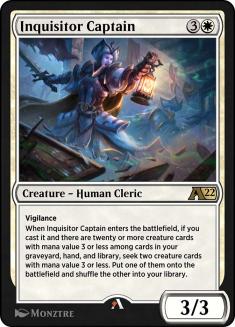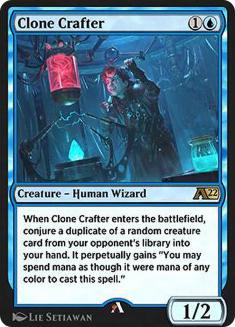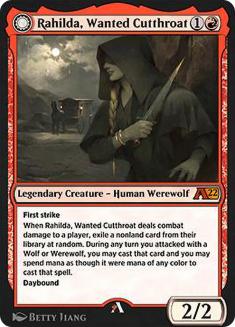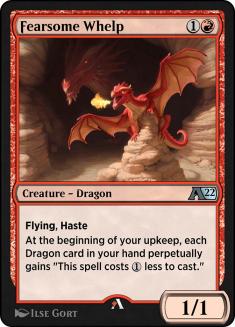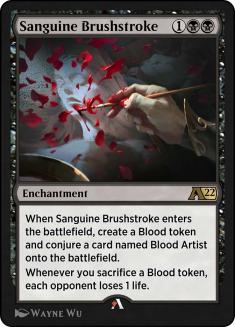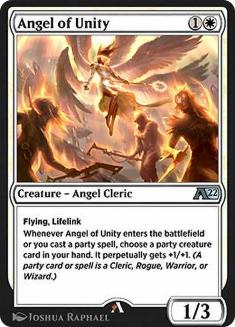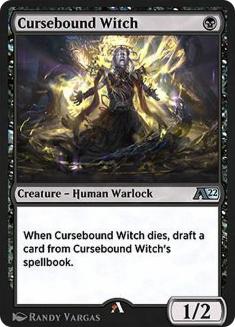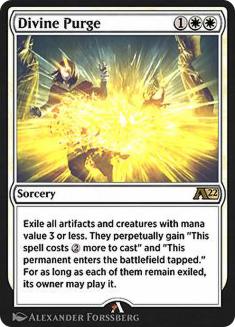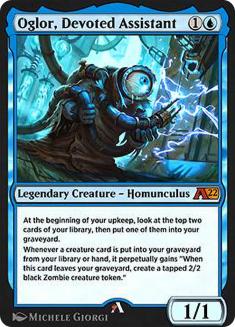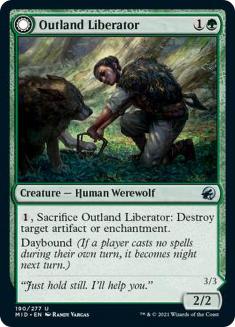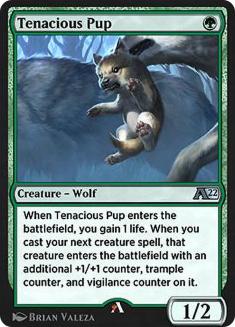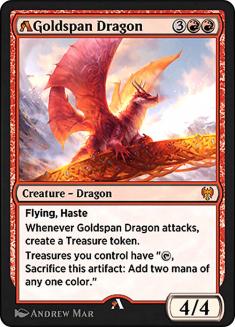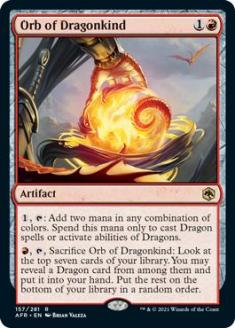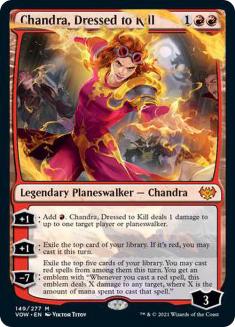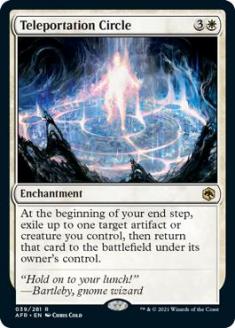Alchemy has arrived and after a few days on the ladder I’m ready to present my very official, binding, and authoritative review of the Alchemy format. Ready? Okay… here we go.
I have absolutely no idea how I feel about Alchemy.
I could make a pros and cons list that would fill this entire article, but I’ve also got a bunch of cool decklists to share, and I know you’d much rather see those than hear me rant again. Here’s the shortest encapsulation of my feelings I can give.
Alchemy, right now, is not materially different enough from Standard to justify its existence. But it can be. Like most things related to Magic’s play offerings, Alchemy’s success (or failure) hinges almost entirely on how Wizards of the Coast (WotC) manages the format. The burden is even higher on Alchemy though because its entire premise is one founded on extra care and attention that extends past the initial creation of the cards. Make that care a priority, and I could easily see Alchemy becoming my favorite format. Make it an afterthought, and you’ve got a lot of people looking for any reason to bail on Alchemy and maybe Arena as a whole.
One paragraph. That’s about as succinct as you are ever going to get from me. Now let’s talk Magic cards.
To set up how I’m approaching deckbuilding for Alchemy, I think it’s worth looking the Top 10 list of new Alchemy cards that Gerry Thompson and I came up with for the Arena Decklists podcast.
- Key to the Archive
- Inquisitor Captain
- Clone Crafter
- Rahilda, Wanted Cutthroat
- Fearsome Whelp
- Sanguine Brushstroke
- Angel of Unity
- Cursebound Witch
- Divine Purge
- Oglor, Devoted Assistant
The striking thing about this list is how many of these cards deal in raw cardboard, in that they create two threats immediately or over time. This combines with the nerf of Alrund’s Epiphany to inspire gameplay based on mana maximization and snowballing battlefields. You can still play Mono-Green Aggro❄ or Mono-White Aggro❄, but why would you when there are multiple aggro decks that can offer similar pressure as a default but also have combinations of cards that dramatically increase per turn output?
If you just make threats which are combinations of numbers, decks now have the tools to two-for-one you into dust. Decks like Orzhov Clerics are getting some early buzz, but most lists I’ve seen just make big bodies. This is not the right path forward for aggro. For me, I’m demanding reach out of my aggro choices.
On the midrange side of things, reach remains just as important. You aren’t running anyone out of resources and winning with a reasonably sized body. If you aren’t going full-bore into an engine, explore ways to close games that can also function as defensive tools.
Finally, Alrund’s Epiphany may have released its stranglehold on the top end of the meta, but don’t read that as the game returning to an older style of Magic. End-games, particularly from Izzet builds, remain massive. Hullbreaker Horror can be part of the plan, but Key to the Archive provides both mana and tools that can take over games. You don’t necessarily need to copy a Time Warp with your Galvanic Iteration; a Demonic Tutor or even a simple Lightning Helix will often put a game equally out of reach. Teferi, Who Slows the Sunset is no slouch along side Key to the Archive either.
I’ve got lists in all three veins today, and they’re all designed for Best-of-One. Why? Well, for ladder play, I do think Best-of-One is the more compelling experience. When it comes to “real” formats, I usually focus on Best-of-Three because I expect it to be where the bulk of competition occurs. For the time being, Alchemy is a complete wild card. I have no idea where it fits into the competitive ecosystem, or if that ecosystem even realistically exists anymore.
As I’ve mentioned previously, I’m just trying my best to enjoy Alchemy and I want you to do the same. I think the best way to do that is experience as many archetypes as possible before the format congeals and play a little Best-of-One. Besides, sideboards before we have a targetable metagame will always be a lark.
Aggro
Gruul Werewolves
Creatures (29)
- 4 Werewolf Pack Leader
- 3 Tovolar, Dire Overlord
- 4 Kessig Naturalist
- 4 Reckless Stormseeker
- 2 Outland Liberator
- 4 Ascendant Packleader
- 2 Bloodrage Alpha
- 2 Rahilda, Wanted Cutthroat
- 4 Tenacious Pup
Planeswalkers (1)
Lands (11)
Spells (19)

There are obvious Werewolf additions in the Alchemy-specific cards like Rahilda, Wanted Cutthroat and Bloodrage Alpha. I appreciate these cards, but neither is the reason why I think this version of Werewolves is finally ready for Tier 1. The first win for Werewolves is addition by subtraction. With other aggressive decks losing a point of power off their Faceless Havens, the baseline clock of Werewolves looks on par with the format’s best options.
Second, Outland Liberator feels like a real card in the format, especially in the context of Best-of-One where it still provides a respectable body and a way to get the night/day cycle started even if your opponents aren’t packing artifacts and enchantments. Many opponents will be though since Key to the Archive and Sanguine Brushstroke are two of the most important cards in the entire Alchemy format.
Finally, and most importantly, Werewolves picked up another strong one-mana play in Tenacious Pup. This unassuming good boy turbo-charges your aggressive starts while simultaneously helping you get wide for Tovolar, Dire Overlord and the pump ability from Kessig Naturalist. How good is Tenacious Pup into Rahilda, Wanted Cutthroat? Or Werewolf Pack Leader? These kinds of starts will completely shut off the ground for some opponents. This type of plan is certainly vulnerable to getting outsized by things like Orzhov Clerics, but I expect that deck to fade as time goes on.
A ruthless clock, plus the type of card advantage that can actually power through a format full of two-for-ones, seems like an incredible place to be early on in a new metagame.
Boros Burn
Creatures (18)
- 4 Bloodthirsty Adversary
- 2 Rem Karolus, Stalwart Slayer
- 4 Voltaic Visionary
- 4 Voldaren Epicure
- 4 Toralf's Disciple
Planeswalkers (1)
Lands (11)
Spells (30)

When Gerry and I talked about Toralf’s Disciple, we both remarked how silly of a card it was. You generally don’t want to jam a bunch of Lightning Bolts into your deck on Turn 3. You want bigger spells. The only scenario where a bunch of Lightning Bolts makes sense is when the rest of your deck is already a bunch of Lightning Bolts.
But when I went and took a look, it turned out we do actually have a fair amount of other Lightning Bolts. And we’ve got a few tricks we can do with them. Buy them back with Bloodthirsty Adversary. Empower them with Rem Karolus, Stalwart Slayer. Draw more of them with Voldaren Epicure, Voltaic Visionary, and Showdown of the Skalds. It’s a little silly, but if reach truly is the key to fighting through over-clogged battlefields, it’s hard to get “reachier” than this.
Mono-Red Dragons❄
Creatures (18)
- 2 Magda, Brazen Outlaw
- 2 Inferno of the Star Mounts
- 2 Manaform Hellkite
- 4 Fearsome Whelp
- 4 Town-Razer Tyrant
- 4 Goldspan Dragon (MTGA)
Planeswalkers (2)
Lands (22)
Spells (18)

Another option for ignoring a resource-rich and clogged battlefield is to just fly over it. Mono-Red Dragons❄ isn’t trying to out-card anyone. It just needs the last big threat standing. With the addition of Fearsome Whelp, this deck is hard-focused on one thing. Make a big four-drop. Make a big-five drop. Hope that’s enough. Not many decks will be able to sacrifice the land set ablaze by a Turn 3 Town-razer Tyrant, and that means damage, at least over the short term. Even if they do sacrifice, you’re buying time before they can go huge enough to outclass your Dragon threats.
Reach here is a little different from in our other decks and comes mostly from Alchemist’s Gambit. With Goldspan Dragon on the prowl, it should be pretty easy to drop this after a big hasty attack and transition to lethal. If an opponent does stabilize, we’re not completely locked to the top of our deck, as both Orb of Dragonkind and Chandra, Dressed to Kill are able to get us some redraws to another threat. There’s nothing flashy here, but this deck does its thing consistently. Again, a great place to be in the early days of a format.
Midrange
Rakdos Blood
Creatures (19)
- 2 Eyetwitch
- 4 Shambling Ghast
- 2 Skullport Merchant
- 3 Voldaren Bloodcaster
- 4 Bloodtithe Harvester
- 4 Voldaren Epicure
Lands (17)
Spells (24)

Midrange isn’t about sometimes attacking and sometimes defending anymore; it’s about simultaneously executing both gameplans. This deck is incredible at those type of setups, as it uses multiple sources of drain to keep your opponents from ever getting comfortable. Combine that with solid sweepers and evasive threats, and there shouldn’t be any deck in the format that ever feels comfortable playing against Rakdos Blood decks.
These decks will be able to take a bunch of different forms. They can go much harder on the Blood angle, resemble more traditional Rakdos Sacrifice lists, or do what I did, and draw inspiration from a list I featured last week piloted by ウコン 福野田 in the RedBull Untapped International Qualifier.
Stensia Uprising plays well with all aspects of our plan, while also just working with an accumulation of Blood. Treasures, and creatures to deal our opponents seven. Combine that with a drain or two from Blood Artist, a trigger from Sanguine Brushstroke, and many an opponent will find themselves dead from seemingly safe life totals. If I were playing this deck in Traditional Alchemy, I would swap the two Eyetwitch for Cursebound Witch and reclaim my entire sideboard, but the free slots are too good to pass up in Best-of-One.
Control
Izzet Control
Creatures (7)
Lands (12)
Spells (41)

Here’s where the news gets a little grim. I still think Izzet “stuff” is the biggest and best thing you can do in the format. Some of these numbers are going to depend on exactly how the format shakes out, but these decks are powerful and can play against absolutely anything in the format. I look to get the job done here with a bizarre smattering of threats, but this reflects the reality of living on the Best-of-One ladder. You want to hedge a little bit against everything, and Izzet’s primary threats are so versatile that one can never be entirely dead — it just might not be the best tool for the job.
Adding Key to the Archive opens brand-new avenues to victory. Sure, you can just spike the Approach of the Second Sun from the spellbook, but you just don’t have to once you have Galvanic Iteration in your deck. So many of these cards are secretly game-closing, and the problem gets even worse for your opponents when you rebuy them with Lier, Disciple of the Drowned.
Discover the Formula is another sneaky new win condition that plays incredibly well with both Lier and the handful of Lessons you’re almost certain to generate with the help of Divide by Zero. The deck just sort of “goes off” now. It’s hard to conceptualize until the first time you Galvanic Iteration a Discover the Formula, but in some ways, it can feel even more powerful than the old Alrund’s Epiphany endgame. Less annoying though.
I think this is the best deck in Alchemy right now. That’s not a conclusion anyone wanted to hear because it does feel very similar to the Standard we’ve been living in. The problems with Izzet are multitudinous though, and I’m not surprised to find Hullbreaker Horror atop the roost.
Azorius Blink
Creatures (6)
Planeswalkers (3)
Lands (11)
Spells (40)

While I may believe in Izzet far more, this is the control deck my heart wants to play. Clone Crafter exemplifies Alchemy. It’s just such an easy two-for-one that it seems foolish not to attempt to maximize it. Were you the type of player who loved boring your opponent to death with Yorion, Sky Nomad loops? Wait until you start blinking Key to the Archive and Clone Crafter with Teleportation Circle.
This deck also features the best sweeper in the Alchemy format, Divine Purge, and it’s double-dipping on the card by using it to get extra value out of your Clone Crafters. Even if that weren’t the case, I still think it’s a critical tool for its ability to come online early enough to challenge aggressive starts from Werewolves, reset the sizing on Clerics, and clean up all the nonsense left behind by the various Blood decks.
I went with the recently buffed Wizard Class as my card draw of choice because I wanted to have a home for excess mana once I got Teferi, Who Slows the Sunset plus Key to the Archive online, and it also seemed like a good idea to make my Clone Crafter bodies relevant going long. If you just wanted to play good cards and load up on Memory Deluge, I wouldn’t be mad at you.
I don’t think games will ever be easy with this deck. Your path to victory is always convoluted and complicated, and the deck doesn’t have an “I win” button short of your opponent being foolish enough to let your Clone Crafters take a bunch of Hullbreaker Horrors. If you’re the type of player who this deck appeals to though, I don’t have to make excuses to you. You know what you’re in for and you’re going to love every second of it.
This deck is a great note to end on because it speaks to what the Alchemy format has the potential to provide all of us. If it commits to being a format that stays fresh above everything else, we can sort of delude ourselves into chasing bizarre synergies that we can hope to push into Tier 1.5 before things ultimately get sorted out and the next dominant deck is found.
Most Magic decks are exploitable, and only the most strategically sound concepts can exist long-term. The reality of contemporary Magic design makes it unlikely that these concepts ever consist of good threats and answers — format longevity will almost always be born of something with absurd output potential. Taking all the turns, instant-win seven-mana sorceries, and four-mana enchantments doubling your mana feel like the new DNA of the game. However, with aggressive balancing, broken things can be continually brought back in line with the field, and we can all enjoy the mad scramble to find something new before it gets identified as the next broken thing.
It’s a weird concession, but I’m still excited about any potential change to the status quo. Let’s hope Alchemy represents that change.


